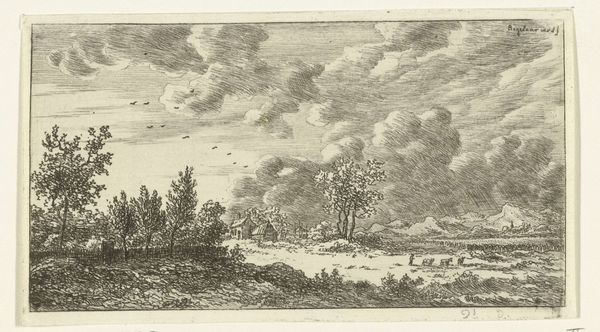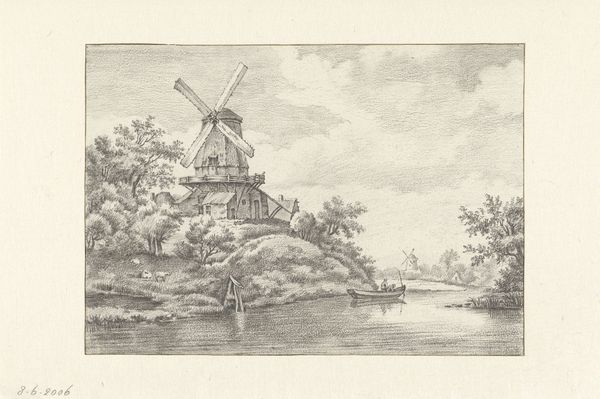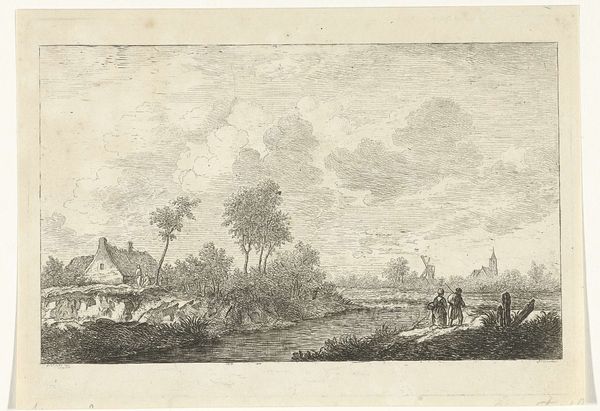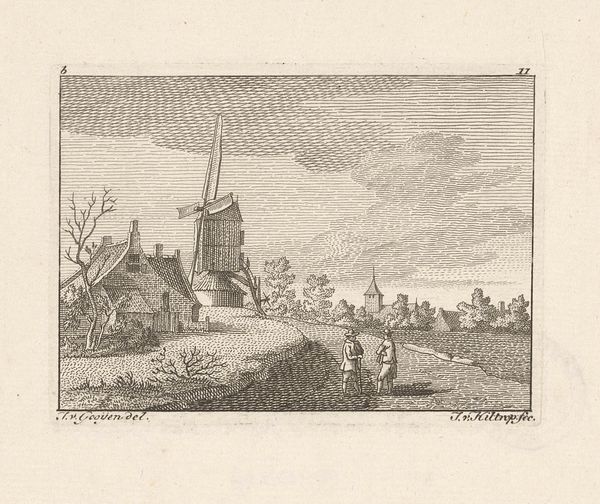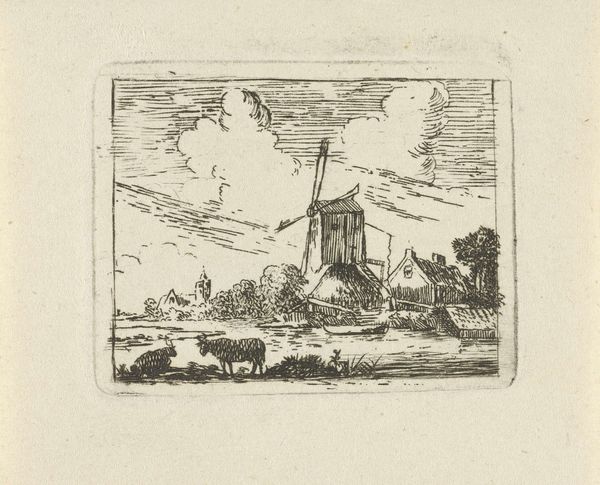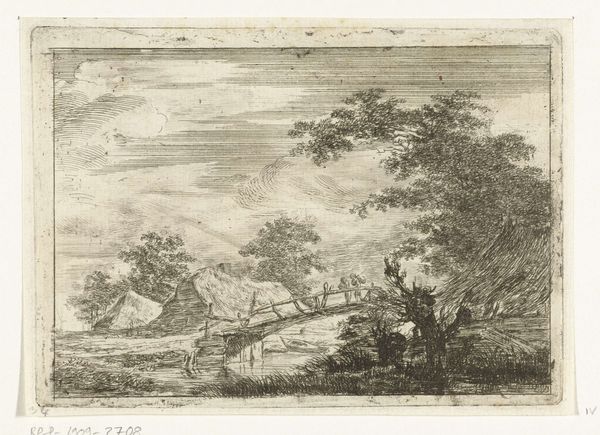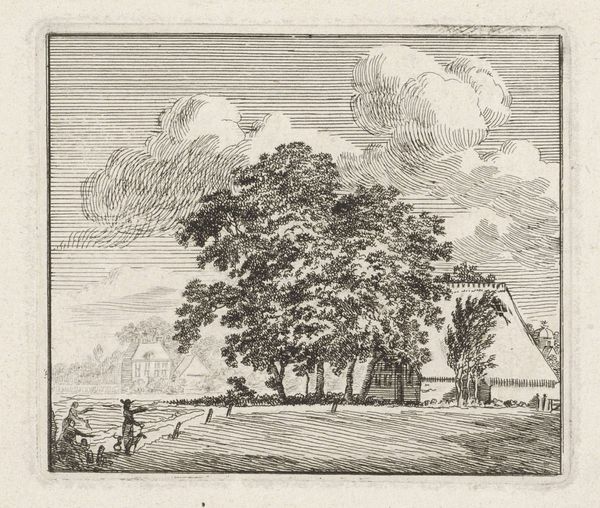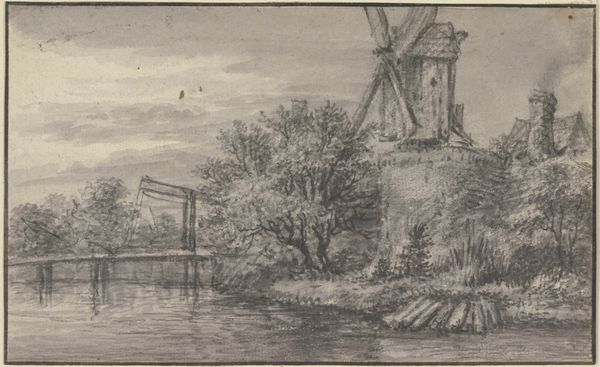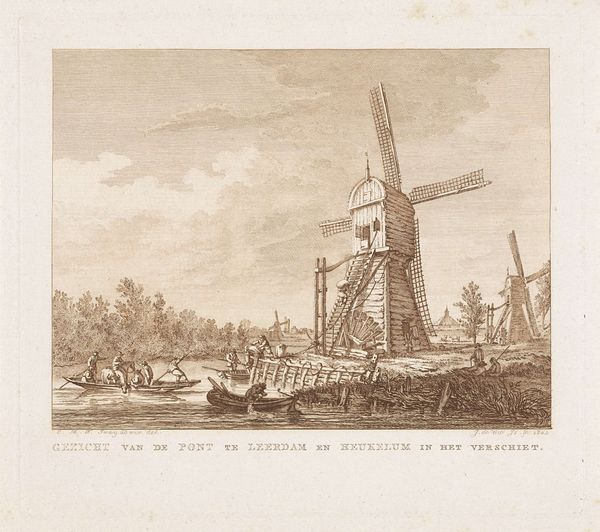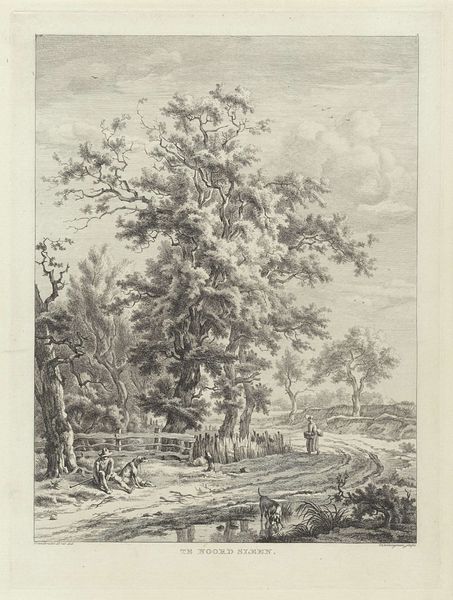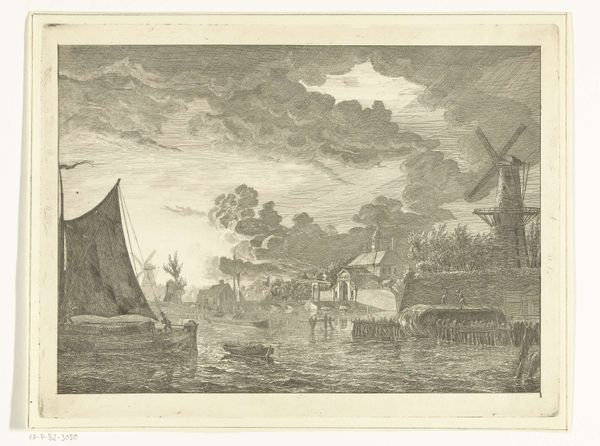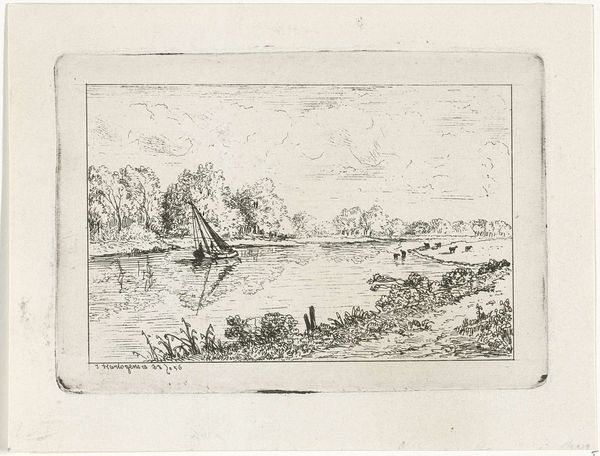
drawing, print, engraving
#
pencil drawn
#
drawing
# print
#
pencil sketch
#
old engraving style
#
landscape
#
pencil drawing
#
pen-ink sketch
#
pencil work
#
engraving
#
realism
Dimensions: height 240 mm, width 205 mm
Copyright: Rijks Museum: Open Domain
Editor: This engraving, "River View with a Mill and Cows in the Water," by Pieter Gerardus van Os, likely made between 1791 and 1839, has such a peaceful feel. The cows wading in the water, the windmill turning… It’s idyllic. What do you see in this piece? Curator: The symbols whisper of the Dutch Golden Age, long past when it was created, yet enduring. The windmill, a symbol of prosperity and control over nature, stands tall, almost as a monument. Do you see how its height is echoed in the towering clouds behind it? Editor: Yes, it’s like the windmill is trying to reach the sky. Are the cows meant to symbolize something too? Curator: Animals in art often connect us to the natural world, the simplicity of existence, and rural life. They serve as archetypes, reflecting the relationship between humanity and nature, so important for understanding Dutch cultural identity. They represent a sense of grounding. Note the vessel too, gliding silently past a distant church. What thoughts arise for you as you notice this juxtaposition? Editor: I see a contrast. The windmill is powerful and industrious. And there is the church, also in the distance, hinting at established order and beliefs, versus the boat perhaps symbolizing journey or the everyday commerce in that society. They seem to peacefully coexist, maybe pointing to Dutch values. Curator: Precisely. And the cows almost act as witnesses to that silent coexistence. What a keen eye you have. This landscape serves not just as a pretty scene, but as a symbolic portrait of a culture. Editor: I never thought about a landscape carrying so much symbolic weight! I’ll definitely look at art differently now.
Comments
No comments
Be the first to comment and join the conversation on the ultimate creative platform.
